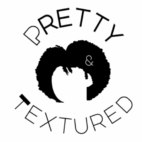
When it comes to skincare, I have never really had to worry about it. The older I get though the more I see why a good skincare routine is important. As a cosmetologist I have always leaned towards hair, but I have been dabbling in skincare lately. I have enjoyed learning about proper skincare and including that into my daily routine now. Before you can create a skincare routine for yourself you first have to find out what your skin type is. According to the American Academy of Dermatology (ADD), there are five primary skin types. These include oily skin, normal skin, dry skin, combination skin, and sensitive skin. Remember one thing sensitive skin can be in combination with the other skin types.
The Skin Types
There are different ways to find out what type of skin you have. We will get into that later. First we are going to discuss the different types of skin and the areas they affect.
- Oily Skin: Oily skin is the overproduction of sebum. Sebum is the natural oils that we produce. Oily skin shows up shiny or greasy in the T-Zone. The T-zone is your forehead, nose, and chin area.
- Dry Skin: Dry skin can be rough or tight appearing. If you have dry skin it means that you are producing less sebum than a person with normal skin. Dry skin usually shows up on the cheeks.
- Combination Skin: This is a mixture of both oily and dry skin types. You will know if your T-zone looks greasy and your cheeks look drier.
- Normal Skin: You have neither excessive oiliness or dryness. You have a naturally healthy glow and a smooth texture. Less prone to experience breakouts or skin sensitivity.

When it comes to sensitive skin it can be mixed with the other skin types. Having sensitive skin means that you are easily irritated by certain ingredients and environmental elements.
Determining skin type techniques
There are 2 (two) different techniques that you can do at home to decide which category you fall in. Below are theses techniques and the steps to do them.
1. Visual Inspection Method (Watch and Wait Method):
- Wash your face with a gentle cleanser.
- Lightly use a towel to pat dry your face.
- Wait 30 minutes before checking for results.
Look at your skin to check for oiliness in the T-Zone area. If it is oily, then you have oily skin. If your skin appears flaky or tight, then you have dry skin. If you notice a combination of both, then you have combination skin. If there are no changes and your face feels fine then you have a normal skin type.
2. Blotting Paper Method:
- Wash your face with a gentle cleanser.
- Lightly pat your face dry.
- Wait 30 minutes.
- Press a blotting sheet or tissue on different areas of your face.
- Check to see how much oil was absorbed by holding the sheet up to the light.
Depending on the amount of oil on the tissue will help decide your skin type. If there is an excessive amount of oil, you have oily skin. If the appears to be no oil, you have dry skin. If there is only oil in the T-zone but not the cheeks, you have combination skin.

References:
American Academy of Dermatology: http://www.aad.org Retrived on: July 09, 2025
Before you go make sure you check out our store! yes we will be bringing you different products for you to buy… Click Here
Leave your comments down below and share with your family and friends.
Until next time…
Discover more from Pretty & Textured
Subscribe to get the latest posts sent to your email.



